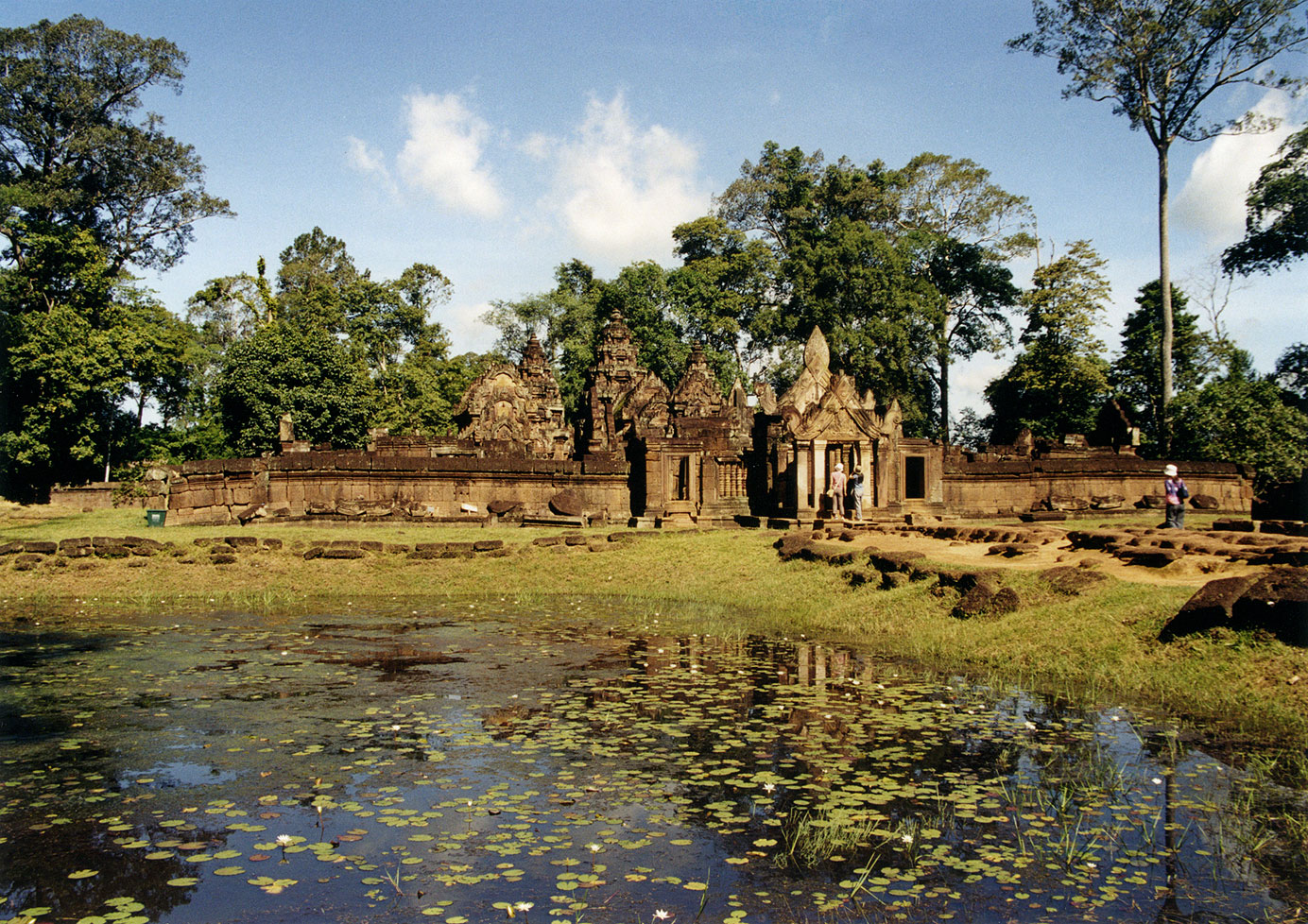|
Banteay Samré
Banteay Samré ( km, បន្ទាយសំរែ ; "The Citadel of the Samré") is a temple at Angkor, Cambodia, located 400 metres to the east of the East Baray. Built during the reign of Suryavarman II and Yasovarman II in the early 12th century, it is a Hindu temple in the Angkor Wat style. Named after the Samré, an ancient people of Indochina, the temple uses the same materials as the Banteay Srei. Banteay Samré was excellently restored by Maurice Glaize from 1936 until 1944. The design of its single ogival tower is immediately recognizable as Angkor Wat style along with other temples in the region such as Thommanon and Chau Say Tevoda. Due to this temple's similarity to some monuments of north-east Thailand, it has the appearance of a compact Phimai. While there are no inscriptions describing its foundation, it seems likely to have been built by a high official of the court during the reign of King Suryavarman II. Plan It has a single tower over the shrine and t ... [...More Info...] [...Related Items...] OR: [Wikipedia] [Google] [Baidu] |
Cambodia
Cambodia (; also Kampuchea ; km, កម្ពុជា, UNGEGN: ), officially the Kingdom of Cambodia, is a country located in the southern portion of the Indochinese Peninsula in Southeast Asia, spanning an area of , bordered by Thailand to the northwest, Laos to the north, Vietnam to the east, and the Gulf of Thailand to the southwest. The capital and largest city is Phnom Penh. The sovereign state of Cambodia has a population of over 17 million. Buddhism is enshrined in the constitution as the official state religion, and is practised by more than 97% of the population. Cambodia's minority groups include Vietnamese, Chinese, Chams and 30 hill tribes. Cambodia has a tropical monsoon climate of two seasons, and the country is made up of a central floodplain around the Tonlé Sap lake and Mekong Delta, surrounded by mountainous regions. The capital and largest city is Phnom Penh, the political, economic and cultural centre of Cambodia. The kingdom is an elective co ... [...More Info...] [...Related Items...] OR: [Wikipedia] [Google] [Baidu] |
Banteay Srei
Banteay Srei or Banteay Srey ( km, បន្ទាយស្រី ) is a 10th-century Cambodian temple dedicated to the Hindu god Shiva. Located in the area of Angkor, it lies near the hill of Phnom Dei, north-east of the main group of temples that once belonged to the medieval capitals of Yasodharapura and Angkor Thom.Higham, ''The Civilization of Angkor'', p.79. Banteay Srei is built largely of red sandstone, a medium that lends itself to the elaborate decorative wall carvings which are still observable today. The buildings themselves are miniature in scale, unusually so when measured by the standards of Angkorian construction. These factors have made the temple extremely popular with tourists, and have led to its being widely praised as a "precious gem", or the "jewel of Khmer art." History Foundation and dedication Consecrated on 22 April 967 A.D., Bantãy Srĕi was the only major temple at Angkor not built by a monarch; its construction is credited to the courtiers ... [...More Info...] [...Related Items...] OR: [Wikipedia] [Google] [Baidu] |
Angkorian Sites In Siem Reap Province
Khmer architecture ( km, ស្ថាបត្យកម្មខ្មែរ), also known as Angkorian architecture ( km, ស្ថាបត្យកម្មសម័យអង្គរ), is the architecture produced by the Khmers during the Angkor period of the Khmer Empire from approximately the later half of the 8th century CE to the first half of the 15th century CE. The architecture of the Indian rock-cut temples, particularly in sculpture, had an influence on Southeast Asia and was widely adopted into the Indianised architecture of Cambodian (Khmer), Annamese and Javanese temples (of the Greater India). Evolved from Indian influences, Khmer architecture became clearly distinct from that of the Indian sub-continent as it developed its own special characteristics, some of which were created independently and others of which were incorporated from neighboring cultural traditions, resulting in a new artistic style in Asian architecture unique to the Angkorian tradition. T ... [...More Info...] [...Related Items...] OR: [Wikipedia] [Google] [Baidu] |

